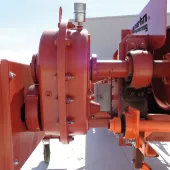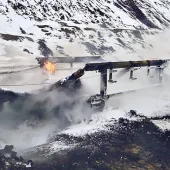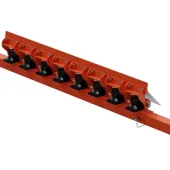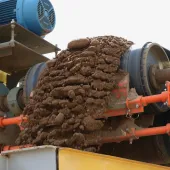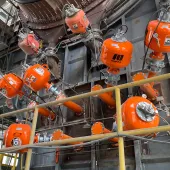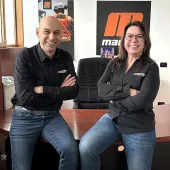Martin Engineering install air cannons at Texas cement plant
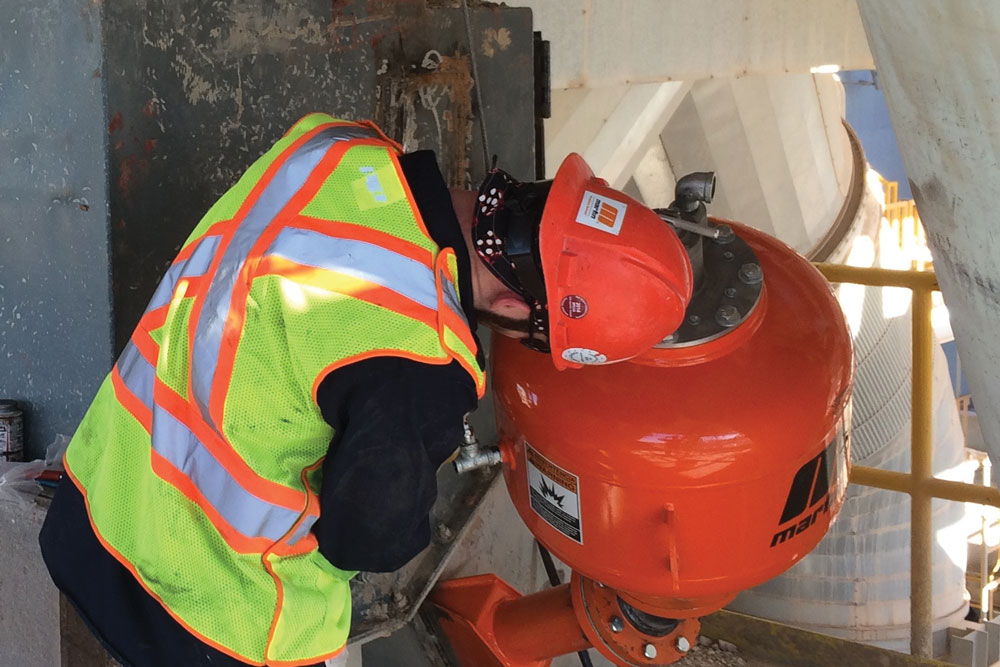
First published in the August 2017 issue of Quarry Management as Let it Flow
Martin Engineering supply Hurricane air cannons to help mitigate transfer chute plugging at Texas cement plant
With an annual production capacity of 2.3 million tons, Martin Marietta’s Hunter cement plant located in New Braunfels, Texas, in the US, experiences heavy rain that douses raw material on its partially covered, tower-mounted D-07 conveyor system. As a result, wet dust and aggregates would often clog the chute and cause back-ups on the belt, leading to spillage issues and halting production, which would often take 6–8h to clear.
Bulk material handling specialists Martin Engineering were approached in order to find a way to prevent this material back-up due to the clogging of the transfer chute. Their solution was a series of Martin Hurricane air cannons strategically placed along the chute to improve material flow, minimize unscheduled downtime and reduce clean-up.
Limestone extracted at Hunter Quarry is crushed to –6in (–150mm) and mixed with clay, before being conveyed to a processing tower. Separate conveyors deliver iron ore and sand to the same tower and the two chutes offload 350–400 tons/h on to the D-07 conveyor, mixing them together on a single 42in belt running at 350ft/min (1.8m/s).
The conveyor travels approximately 300ft (91.4m) to an adjacent tower and offloads into a pyramid-shaped funnel that feeds a 12ft long by 3ft square chute with a flow control gate at the bottom. The gate diverts material to a conveyor leading to the raw mill or to a dumptruck waiting on the ground below. Operators found that wet or damp material gradually formed into a ‘rat hole’ and eventually created an obstruction, resulting in material back-up.
When the material flow began to choke off, two or three workers would gather around the railing at the top of the chute and use air lances and pneumatic jackhammers fitted with 8ft long bits to clear the obstruction. According to a management spokesman: ‘The frequent unscheduled downtime to clear the rotary feeder chute was a challenge. We approached Martin Engineering to explore the possibility of adding air cannons to help resolve the bottleneck issue.’
Air cannon placement for proper flow
Martin Engineering technicians installed a total of five 70-litre air cannons on two levels. The 43kg tanks are suspended from the tower frame by steel cords and are fed by the plant’s existing compressed-air system. They fire a shot of air at up to 120psi from a pressurized tank through a fan-jet nozzle with a 12in wide mouth, which spreads the stream across the surface area of the wall. To clear obstructions and assure proper material flow, the cannon has an effective area of up to 22.6ft3.
On the upper level, two of the cannons were placed along either side of the chute to dislodge accumulation from the wall, and a third unit was installed at the top to free any material that could get trapped where the chute narrows. On the bottom level, a cannon is directed at a downward angle to aid material flow while the lowest unit on the chute specifically addresses the easily clogged diverter gate.
All of the tanks are fitted with a centrally located valve design, offering a direct air path with maximum force output and low air consumption. This level of efficiency reduces the burden on the compressor and shortens the lag time between sequences. The central valve is a detachable component that allows a single worker to disconnect it without the need to remove the tank, for faster and easier maintenance.
A 10-bank positive solenoid control panel is connected to the facility’s programmable logic control (PLC) software, allowing operators to control/monitor the proper firing time and sequence from a remote location. To eliminate the risk of unintentional firing due to drops in pressure, the valve requires a positive signal from the solenoid in the form of an air pulse to trigger discharge.
Reaping the rewards
A few months after installation, Martin Marietta operators report that the air cannon solution has significantly reduced the plugging issues, resulting in continuous operation with minimal unscheduled downtime. The area around the chute also requires only routine clean-up and maintenance as part of the plant’s scheduled inspections.
‘With our long and positive relationship, we were confident that the Martin Engineering team were going to come through,’ said the Martin Marietta management spokesman. ‘The equipment has worked out well and with the team’s consistently attentive service, we are confident that this is a good solution.’
Along with air cannons, Martin Engineering have also equipped the Hunter cement plant with conveyor accessories and other bulk-handling solutions.
For more information visit: www.martin-eng.com
- Subscribe to Quarry Management, the monthly journal for the mineral products industry, to read articles before they appear on Agg-Net.com


